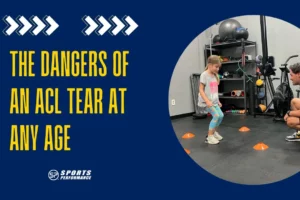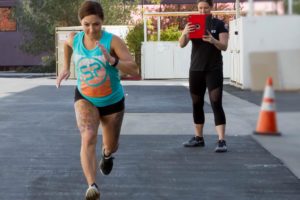Hyperbaric Oxygen Therapy (HBOT) is gaining attention as a powerful tool for enhancing recovery, reducing inflammation, and improving overall health. But how do you know if it’s actually working for you? In this blog, we’ll break down the science behind HBOT, the key indicators of its effectiveness, and how you can track your progress.
What Is Hyperbaric Oxygen Therapy (HBOT)?
HBOT is a treatment that involves breathing 100% pure oxygen inside a pressurized chamber. This increased pressure allows more oxygen to dissolve into the bloodstream—up to 400% more than normal conditions. Why is this important? Oxygen is the fuel for every cell in your body, and when your cells receive more oxygen, they function more efficiently, leading to benefits such as:
- Faster recovery from injuries
- Reduced fatigue and brain fog
- Improved immune system function
- Less inflammation and pain
Inside an HBOT chamber, pressure levels can reach up to three atmospheres, similar to the feeling of being underwater while scuba diving or flying in an airplane. This pressure allows oxygen to penetrate deeper into the body’s tissues, improving healing and recovery.
How to Measure If HBOT Is Working for You
Many people report feeling better, having more energy, and sleeping better after HBOT sessions. But how can you objectively measure progress?
There are two key health metrics that provide clear insights into how HBOT is affecting your body:
1. Resting Heart Rate (RHR)
Your heart is constantly working to pump oxygen-rich blood throughout your body. A lower resting heart rate generally indicates better cardiovascular health and reduced stress.
- A normal resting heart rate ranges from 40-70 beats per minute (BPM), depending on age and lifestyle.
- Individuals with higher stress levels, chronic inflammation, or poor health tend to have a higher RHR.
How HBOT Helps Lower Resting Heart Rate
Consistent HBOT use allows the body to absorb more oxygen, reducing stress and inflammation. Over time, this leads to a decrease in RHR, meaning your heart doesn’t have to work as hard to deliver oxygen.
Studies have shown that after 6-8 weeks of HBOT therapy (2-3 sessions per week, 1 hour per session), some individuals experience up to a 10% decrease in resting heart rate, signaling improved cardiovascular efficiency and overall health.
2. Heart Rate Variability (HRV)
HRV measures the time between each heartbeat. Unlike resting heart rate, higher HRV is a sign of better health, as it reflects the body’s ability to adapt to stress.
- Low HRV → Your body is under stress (inflammation, poor recovery, illness, or chronic fatigue).
- High HRV → Your body is well-recovered, balanced, and performing optimally.
How HBOT Improves HRV
When you undergo HBOT sessions, your body absorbs more oxygen, which reduces stress and inflammation. This helps increase HRV, meaning your body is in a more relaxed, well-recovered state.
Tracking HRV over time with a wearable device (smartwatches, rings, fitness bands) can help you determine if your HBOT sessions are effectively improving your stress resilience, recovery, and overall well-being.
How Long Does It Take to See Results?
HBOT is not an overnight solution—it requires consistent exposure to see measurable improvements. Most studies suggest:
- 6-8 weeks of regular HBOT sessions
- 2-3 times per week
- 1 hour per session
Everyone’s body is different. Some people may see results sooner, while others might need more time. The key is to track your progress using resting heart rate and HRV to determine if the therapy is working for you.
Additional Benefits of HBOT
Beyond improving heart rate and HRV, HBOT has been shown to help with:
✅ Stronger Immune System – Less frequent illness and infections
✅ Better Sleep & Mood – Decreased brain fog and improved memory
✅ Reduced Inflammation & Pain – Less joint soreness and chronic aches
✅ Enhanced Recovery – Faster healing from injuries, surgeries, and concussions
For those dealing with chronic pain, stress, fatigue, or inflammatory conditions, HBOT offers a natural solution without the need for medications.
How to Track Your Progress
To determine if HBOT is truly benefiting you, consider using:
- Wearable fitness trackers (smartwatches, rings, bands)
- Apps that monitor resting heart rate and HRV
- Journals to record how you feel before and after sessions
By consistently tracking these markers, you can gain clear insights into your body’s response to HBOT and make adjustments as needed.
As always, we hope this helps! For any questions and all suggestions, please email us at TeamSP@SportsPerformancePT.com
If you want to know more information about how we can help, get started with a FREE discovery phone call.
Click the following link -> DISCOVERY PHONE CALL.
If you’re interested in doing Hyperbaric Oxygen Therapy at Sports Performance -> CLICK HERE TO LEARN MORE & INQUIRE
If you’re more of a visual or audio learner instead of a reader… Listen or watch our Podcast Episode 142: “3 Reasons You Need HBOT Inside Your Wellness Routine” -> CLICK HERE
– Dr. Chris

STAY CONNECTED
Instagram: CLICK HERE
Facebook: CLICK HERE
YouTube: CLICK HERE
Podcast: CLICK HERE
TUNE IN TO OUR PODCAST













